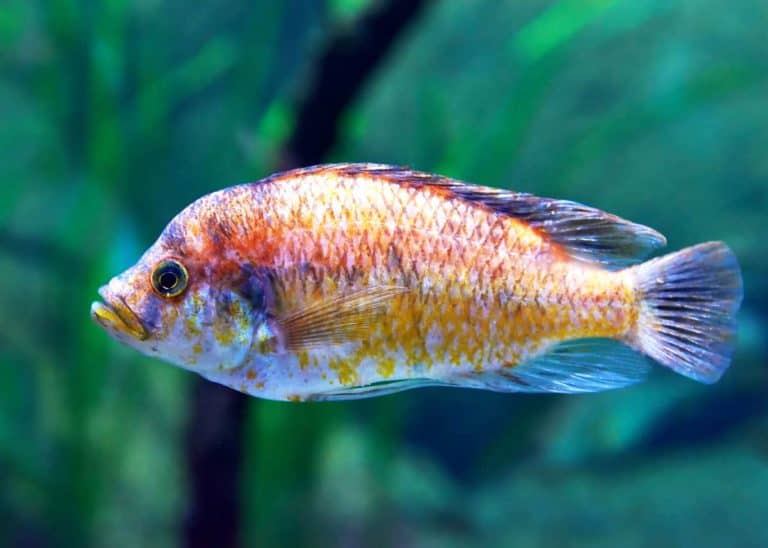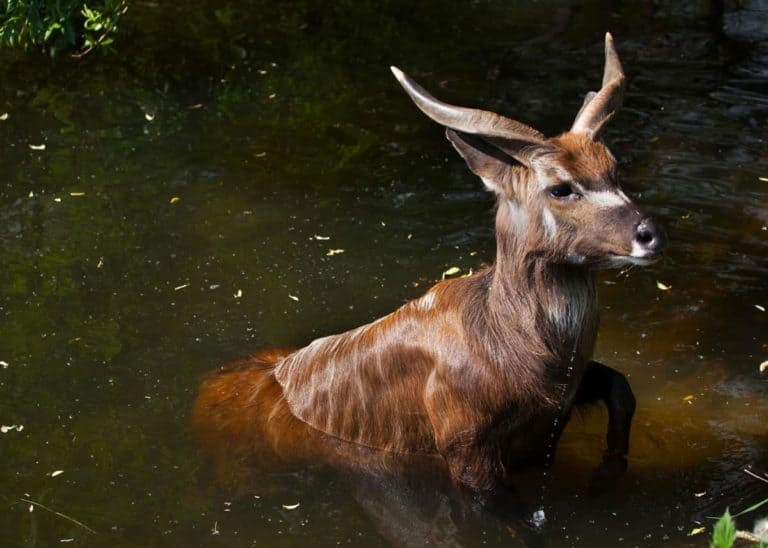Do Sharks Have Bones? Guide to Chondrichthyan Shark Cartilage
Sharks are known for their dorsal fin and teeth. But what about bones? Do sharks have bones? And how many? In this post, you’ll learn about shark skeletons, teeth, and cartilage.
While they can fossilize, sharks do not have bones. Like all fish made of cartilaginous tissues (elasmobranchs), shark skeletons are made up completely of cartilage. Although they have spines and mandibles, sharks don’t have a single bone in their bodies.
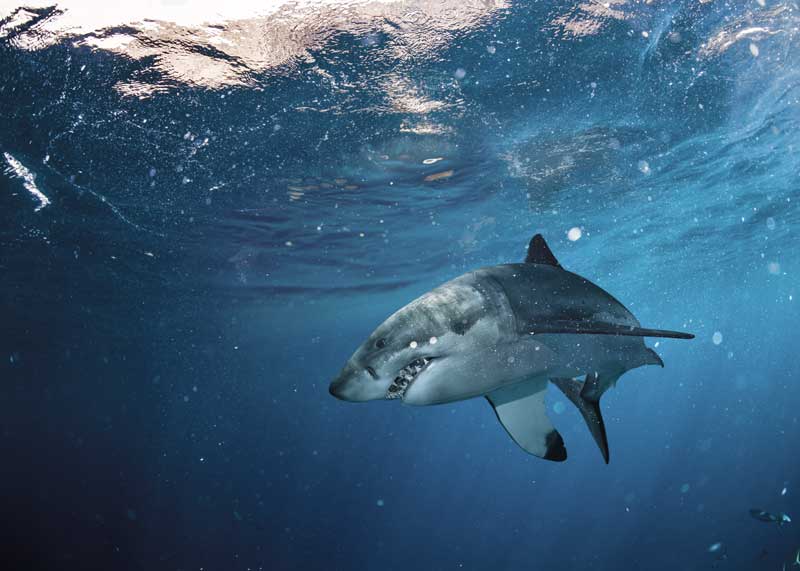
What about the shark jaws on display at aquariums? Aren’t those bones? Or are they something else? All these questions and more will be answered below!
Shark’s Skeleton: How Many Bones?
How many bones does a shark have? Zero. Unlike a human skeleton, sharks don’t have a skeletal structure made of bone.
At least not in the way that we imagine.
Sharks are made mostly of cartilage.
Cartilage is that soft, elastic-like tissue on the tip of your nose and around your ear lobes.
But how does cartilage hold up? How can sharks be known as strong, powerful creatures if they have such soft bodies?
Short answer: calcium.
As sharks age, cartilage hardens with help from calcium salt deposit buildup. This “calcified cartilage”, as scientists call it, appears tough and bone-like.
So now, sharks can swim easily through the water with help from their bendy bodies, almost undetected.
So shark bones aren’t bones? No. While they appear to be like bones, a shark’s skeleton doesn’t meet the scientific definition of bone: “The bone is an organ that forms the skeleton of vertebrates. It is formed from bone tissues, which are mineralized connective tissues.”
In contrast, a shark’s skeleton is calcified cartilage, although having similar characteristics to bone.
Sharks belong to the Class Chondrichthyes – which includes all fish with a cartilage skeleton (no bones).
Shark Skull
Sharks do have skulls, but again, they are made up of that calcified cartilage instead of rock-hard bone.
Sharks have a stocky skull, complete with “the braincase” (part of the cranium that shields the brain), and eye sockets.
The skull keeps the eyes and brain protected from head-on attacks.
A shark’s rostrum (or “snout”, made from the more flimsy, soft cartilage), is out in the open, ready to absorb any blunt force trauma.
Shark Teeth
Shark teeth aren’t bones. Like our teeth, shark teeth are made of dentin, a calcified tissue.
Dentin is stronger and denser than bone and it fossilizes well.
Shark teeth contain the mineral fluoroapatite (fluorinated calcium phosphate). It is also known as shark enamel.
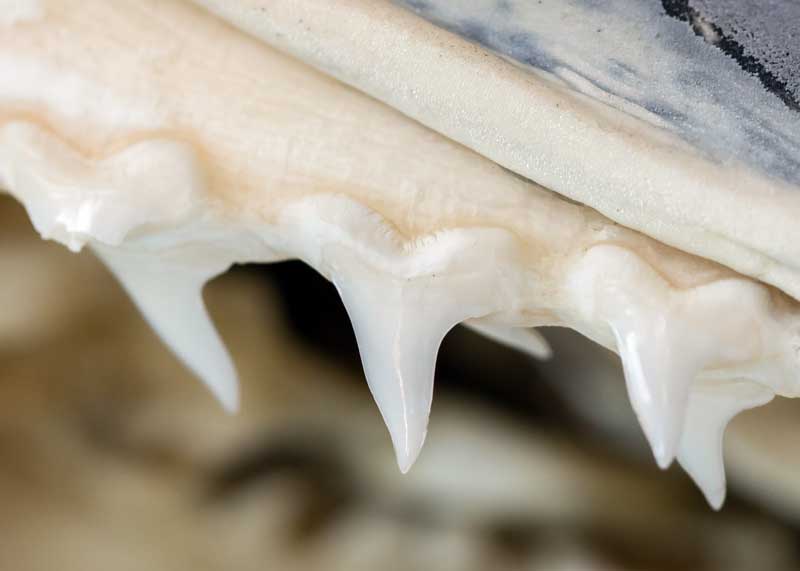
Shark Jaws
To swallow larger prey (sea lions and large fish), a shark’s mouth needs to have the ability to open wide.
Though the jaw is close to the skull, the mandible is not attached and has full-range flexibility going from side to side and even jutting out forward to catch and keep food from fleeing.
This is all thanks to that supple cartilage. Without it, the jaw wouldn’t be able to move as much and sharks would have a much harder time filling their bellies.
Shark Spine and Fins
Scientists have little information on shark spines because they are made of cartilage rather than a less dissolvable substance like bone.
The spine connects to the back fin, so named the “caudal fin”.
This fin is also completely made up of cartilage and is springy while simultaneously being tough enough to act as a propeller for a shark. The caudal fin moves side to side, allowing a shark to move forward through water.
The fins on the two sides of a shark, known as the pectoral fins, are the fins that provide lift. Many relate these fins to the wings of an airplane, as they function the same way.
So, like the wings on a plane, the pectoral fins give a shark balance and steering. Water rushes beneath these fins like air would flow under a plane’s wings, allowing for lift and floating of a rather heavy object.
The last fin on the list may very well be the most popular.
The fin that movies made famous, as a sure sign of imminent danger: the dorsal fin.
Although movies make it look scary, it’s nothing to be afraid of. The dorsal fin is what keeps a shark upright and swimming straight. Simple as that.
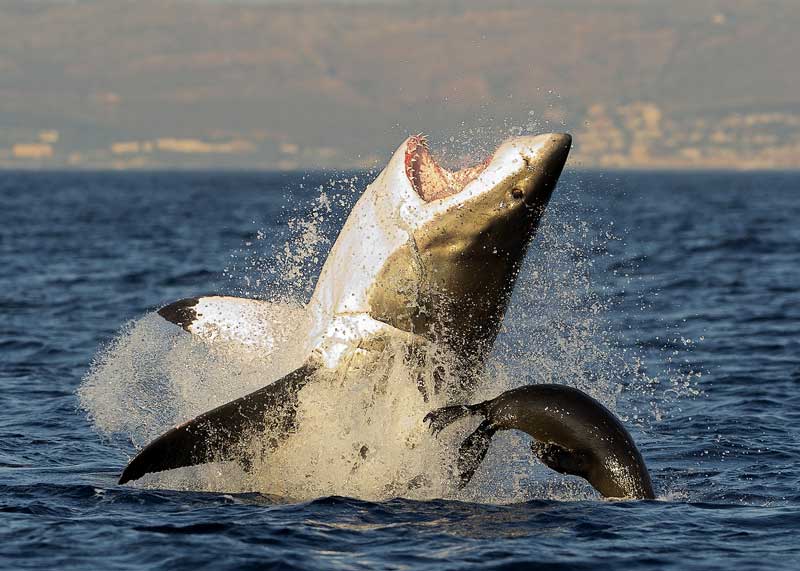
Learn about the Galapagos shark.
Watch this quick video summary by Hank of SciShow.
Shark Anatomy: Skin and Gills
Now that we have a better understanding of what a shark looks like on the inside, there are a few important details to discuss on the outside.
Shark Skin
Anyone who has been to any kind of “touch tank” before has felt first-hand how rough a shark’s skin is. Sandpaper-like and tough, right?
Here’s why.
Sharkskin is not like “normal skin”, because it’s made up of little teeth called dermal denticles.
They are a little sharp and, like scales, all face backward to help a shark cut through water effortlessly and with grace unmatched.
If you pet in the opposite direction from the water flow, you will feel that rough surface catch your hand.
Shark Gills
Another honorable mention, we have the gills.
Working similar to the pectoral fins, water flows into a shark’s maw and exits through the gills, making oxygen flow through the body and allowing a shark to stay oxygenated in the water.
Learn about the smallest shark species in the world.
How Sharks Stay Afloat
Knowing the anatomy of a shark will help explain how sharks stay afloat.
Because these animals are made of cartilage, sharks are actually pretty lightweight.
Relatively speaking, anyway. Though they weigh a lot, sharks don’t have the heaviness of bones weighing them down.
In addition, sharks have another secret weapon that keeps them afloat: the liver.
Liver
Known to store fats for a shark, shark livers are very oily and large. And interestingly enough, it’s this organ that allows a shark its needed buoyancy.
The oils collected in this part of the body regulate the lift given to a shark, so the more fat in a shark’s liver, the more buoyancy it will receive.
A shark that dwells closer to the ocean floor will have more oils in its liver to allow for more floating ability.
Did you know that similar to sharks, octopuses don’t have bones either?
How Do Sharks Fossilize?
So, sharks have livers that help them float and have spongy skin to help them become lighter in water. But they don’t have bones.
How do they fossilize, then?
Complete shark fossils are rare. But partial fossils are common, and not just shark teeth as you might imagine.
According to FossilGuy, “Although shark teeth are by far the most common fossils, many other parts of sharks fossilize. Other parts that can fossilize are the areas of denser cartilage, such as the centers of the vertebra, jaw cartilage, and the rostral node in a shark’s snout. The skin of a shark is made of tiny denticles, which are made of the same enamel that teeth have, meaning they too can fossilize. Some sharks have spines in their fins that will fossilize. Finally, shark feces, or coprolites, are sometimes found preserved.”
We know about calcium salts and how those salts harden cartilage to bone-like substances. And the “shark bones” we see in aquariums really aren’t bones at all. Instead, they are calcified cartilage.
So, though sharks don’t have bones, sharks still have skeletons and tons of cartilage, helping us see just how perfectly suited for their environment.
Did you know? The shortfin mako shark is one of the fastest animals in the world.
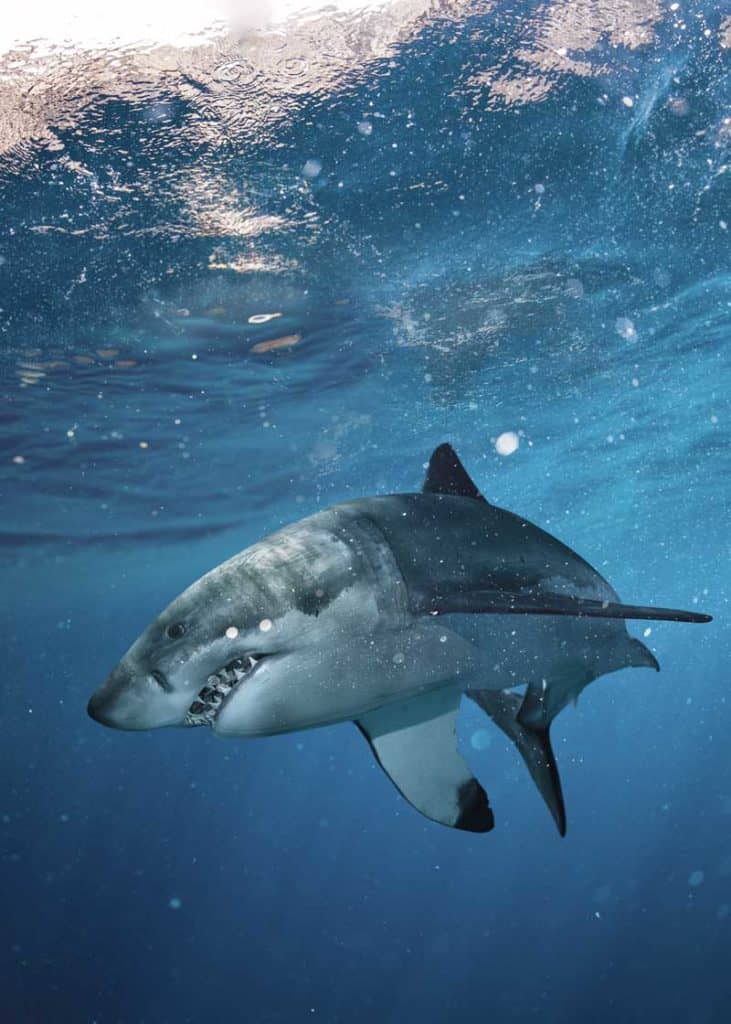
Now to get your mind off of sharks, you might enjoy this post: 115 Happy Beach Quotes and Sayings
Your Turn
Have a question about shark and their anatomy? Join me in the comments!





